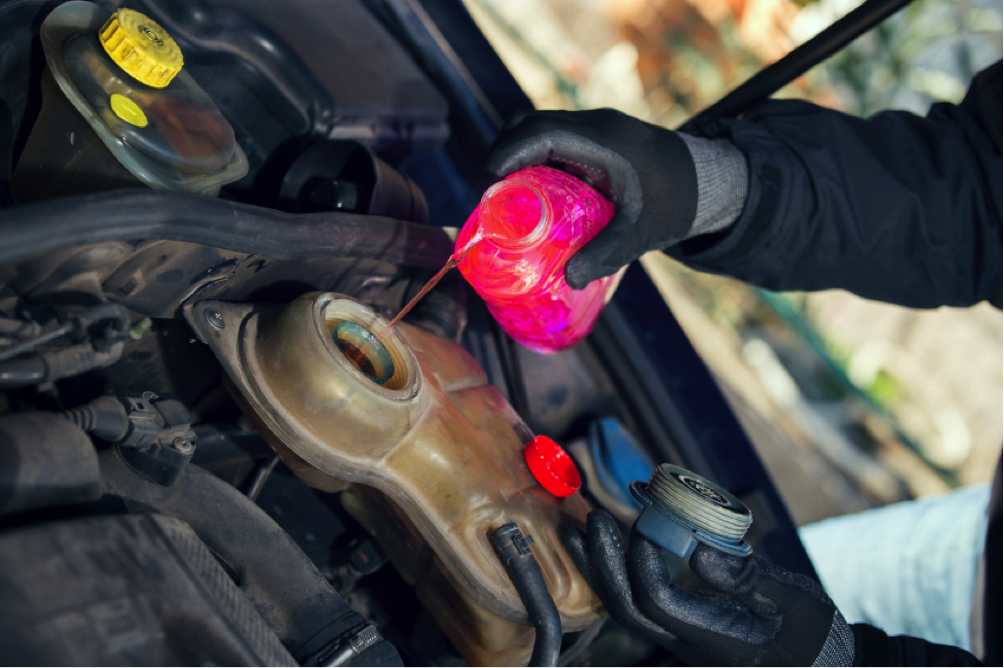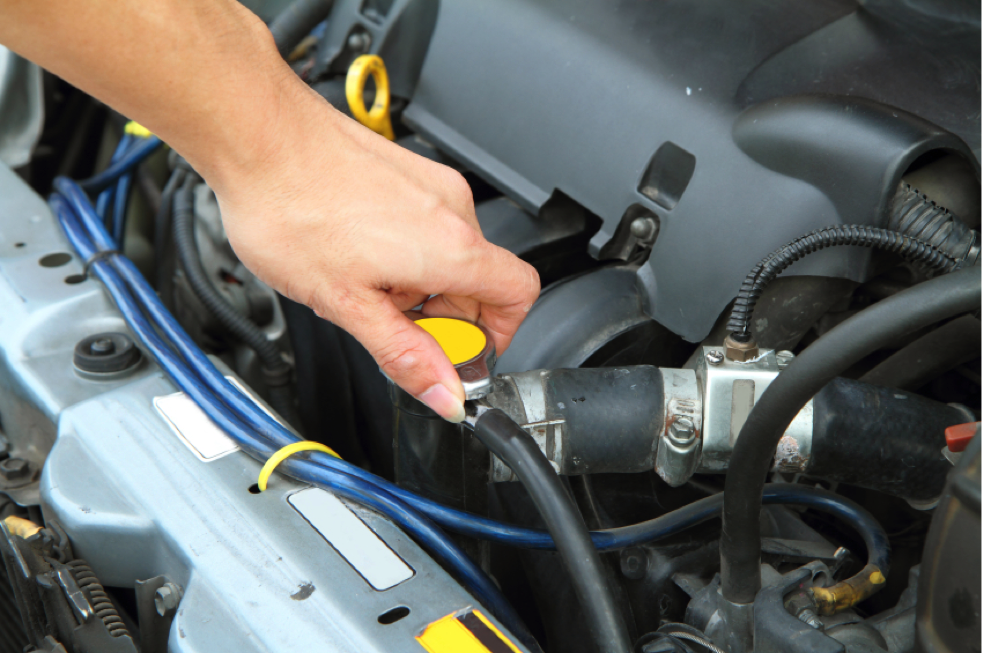
In full flight, your car’s engine actually generates enough excess heat to comfortably heat two houses. Despite recent advances in fuel efficiency, only about 30% of the energy generated by a gasoline engine is actually used to power the car. The rest is redirected back through the cooling system.
Engines run better at a higher temperature, emitting less pollution and limiting wear on components, but the huge amounts of heat that’s generated leave them at risk of overheating. The engine cooling system works to remove excess heat from the engine and regulates the temperature, keeping it at a constant level. Cooling systems are made up of a number of complex components, and can be one of the most difficult automotive systems for mechanic students to get to grips with.
Read on for a quick overview of how engine cooling systems work, and some key points auto repair students should know about maintaining them.
How Cooling Systems Work: An Intro for Auto Repair Programs Students
Most cars use liquid cooling systems, in which coolant, a mixture of water and antifreeze, flows through the valves of an engine absorbing heat. Coolant then passes through a plumbing system down to the radiator, which transfers heat from the fluid into the air.
While they are less common, students enrolled in auto repair programs should also be familiar with air cooling systems, which conduct heat away from the engine cylinders using aluminum fins. A fan then forces air over the fins, transferring the heat back into the air. This type of system is mainly found in older cars, but is still used by many motorcycle brands, such as Harley Davidson.

A Good Car Repair Course Teaches Key Cooling System Components
While the basic function of a cooling system is fairly simple, students taking a car repair course will quickly learn that the process is not so straightforward, and requires a number of components to work.
A water pump circulates coolant around the system into the engine block, which flows through passageways absorbing heat. A special valve functions as a thermostat, measuring the engine temperature and opening at a certain heat to allow coolant to flow towards the radiator.
The radiator then transfers heat through metal cooling fins into the air. The radiator cap seals the system to a specific pressure, and opens to allow fluid to escape if pressure levels get too high. Excess coolant is directed into an overflow tank back into the system.
Electric fans keep air flowing to the radiator and regulate the cars temperature. The heater core, a smaller radiator-like device, heats the interior using excess engine heat.
Cooling System Maintenance Approaches Taught in Auto Repair Programs
Drivers are advised to bring their vehicles in for servicing if they notice any rise in engine temperature, have issues with the interior heating system, or notice any signs of leakage.
When repairing a cooling system, a good guide for students pursuing automotive careers is this seven point program devised by the National Automotive Radiator Service Association (NARSA):
- Perform a visual inspection of all cooling system components
- Do a radiator pressure cap test to check pressure levels
- Check the thermostat for proper opening and closing
- Use a pressure test to identify any external leaks
- Check for combustion gas leakage with an internal leak test
- Test the engine fan for proper operation
- Perform a system power flush and refill coolant

Are you interested in pursuing auto repair training?
Visit ATC to learn more about our programs or to speak with an experienced advisor.

